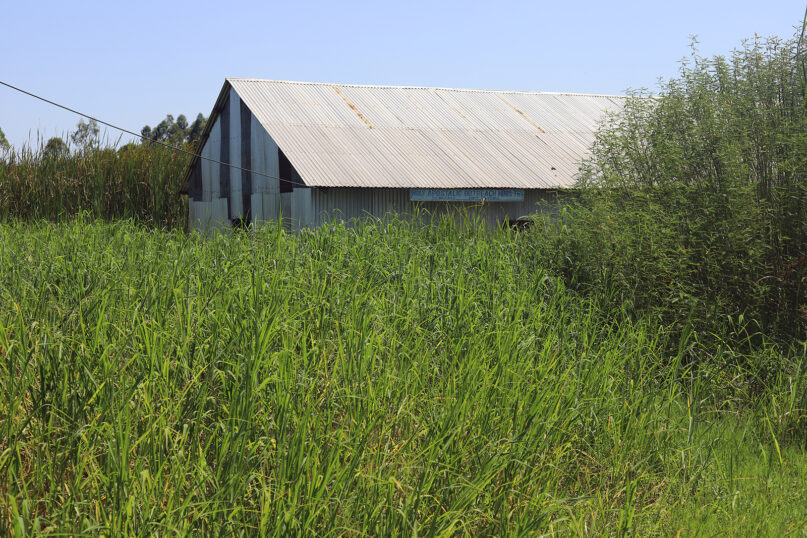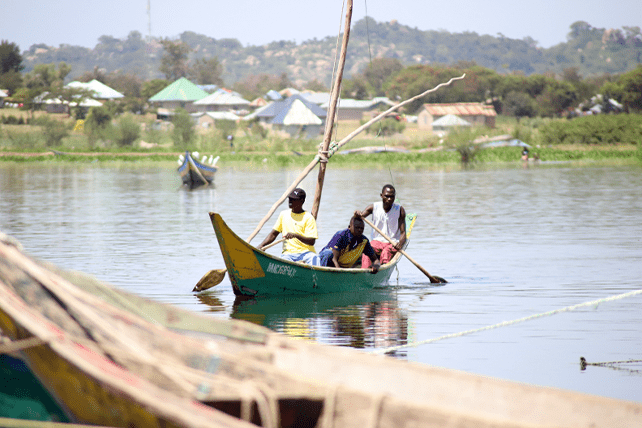BUDALANG’I, Kenya (RNS) — Every Sunday morning, Pastor Pascal Ogutu walks barefoot across the cracked mud of what was once the foundation of his church. He passes submerged gravestones and the sagging roof of the altar, now half-buried in water and overgrown reeds.
“This used to be holy ground,” he said softly, gazing across the shimmering expanse where Lake Victoria has swallowed not only farmland and homes but faith sanctuaries, like his Free Pentecostal Fellowship in Kenya.
In the flood-prone plains of Budalang’i in western Kenya, dozens of churches — some more than 50 years old — have been submerged or structurally weakened due to rising water levels and unpredictable rainfall. Scientists attribute the changes to climate shifts that are intensifying across the Lake Victoria basin, one of Africa’s most populous and ecologically fragile regions.
“The water does not just take land,” said Ogutu, of the Free Pentecostal Fellowship in Kenya, whose tin-roofed sanctuary collapsed last November after months of flooding. “It takes our memory. It takes our worship. It takes the place we felt closest to God.”
Budalang’i, a rural constituency in Busia County near the Uganda border, sits along a natural floodplain where the lake’s waters spill out during seasonal rains. But residents say the floods have become more frequent, intense and destructive. In the past five years, the lake’s water levels have risen by more than 2 meters, or just over 2 yards, according to Kenya’s Water Resources Authority. This backflow, combined with erratic rainfall and clogged drainage from nearby rivers, has displaced thousands of families and inundated schools, churches and cemeteries.
Scientists say the region’s flooding crisis is a visible symptom of broader climate disruptions, some of which are caused by global warming.

A partially submerged church building in Budalang’i, Kenya, along Lake Victoria. (Photo by Tonny Onyulo)
“Lake Victoria is a giant climate mirror,” said Godfrey Khamala, a climate specialist who leads the flood victims committee in Maumau Village, Budalang’i. “What’s happening here is a direct result of regional warming, changing rainfall patterns and human-driven land degradation.”
Deforestation in upstream areas, coupled with poor urban planning and unregulated development, has worsened sedimentation and reduced the land’s ability to absorb rainwater, he said. At the same time, climate change has intensified the Indian Ocean Dipole, a weather pattern that brings extreme rainfall to East Africa.
“These churches are casualties of a system under stress,” Khamala said. “But their loss also reveals how deeply intertwined environment and community life are.”
As a result, faith leaders are speaking out about climate justice. In April, a coalition of churches in Busia organized an interdenominational prayer walk calling for action to protect the lake and relocate vulnerable communities.
“We are stewards of creation, not just victims of it,” said Pastor Moses Okello of Assemblies of Pentecostal Churches in western Kenya. “We cannot preach hope while ignoring the rising waters around our feet.”

